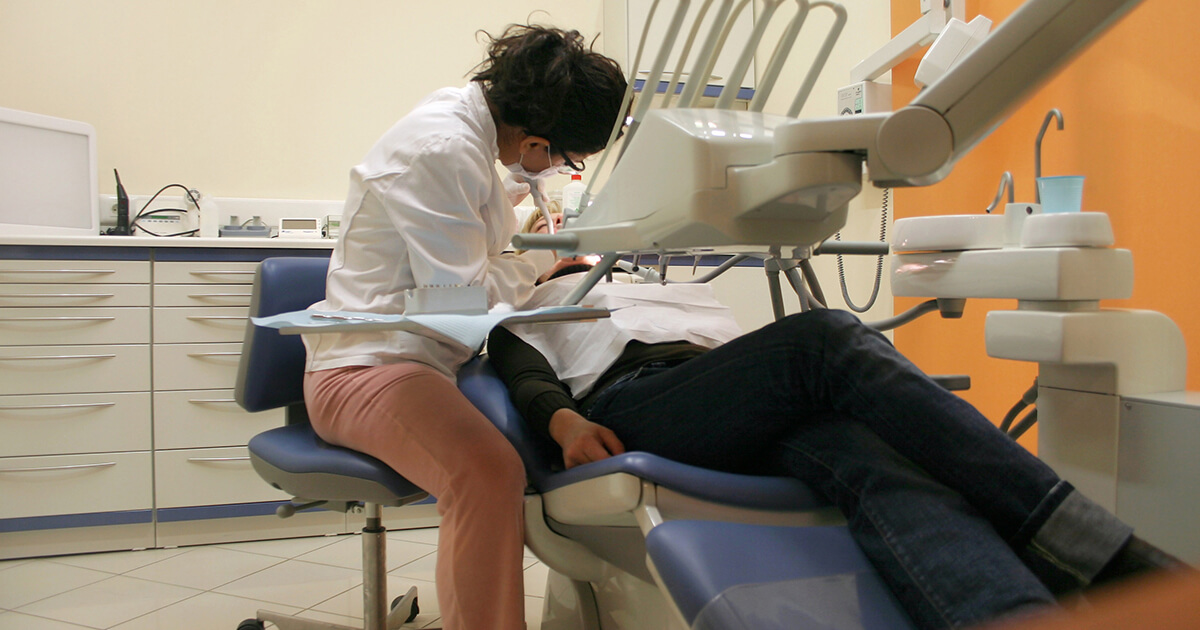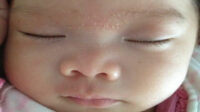These are free sample practice questions taken from the BoardVitals NBDE I Question Bank.
Sample NBDE I Practice Questions
Question 1. Dental Anatomy and Occlusion QID 32946
Through which chain of lymph nodes will a severe infection of a maxillary tooth abscess drain?
A. Submental
B. Submandibular
C. Retropharyngeal
D. Infrahyoid
E. Jugulodigastric
Answer: B. Submandibular.
Explanation:
The submandibular lymph nodes are part of the superficial horizontal ring of lymph drainage. Structures that drain to it include the submental nodes (which are also part of the superficial horizontal ring), cheek, nose, upper lip, maxillary teeth, vestibular gingivae, the hard palate mucosa and gingivae, posterior floor of the mouth, and the lateral aspects of the anterior two thirds of the tongue. The submandibular nodes then drain to nodes of the deep cervical chain, paralleling the right and left internal jugular veins. In our example, a maxillary tooth could drain to vessels through the infraorbital canal and then pass into a submandibular node, next passing to a jugulodigastric node of the deep cervical nodes.
The general schematic of lymph node chain layout can be grouped into three main chains. There is a horizontal ring of superficial nodes, a horizontal ring of deep nodes, and a pair of vertical chains of deep cervical nodes (bilateral). The superficial horizontal ring contains the submental and submandibular lymph nodes, and slightly deeper parotid nodes which include superficial deep preauricular nodes and retroauricular mastoid occipital nodes. The deep horizontal ring includes retropharyngeal, paratracheal, pretracheal, prelaryngeal, and infrahyoid nodes. Finally, the deep cervical vertical chain consists of the jugulodigastric, jugular-omohyoid, and other cervical chain nodes.
The submental lymph node (Choice A) is incorrect. Along with the submandibular lymph node, the submental lymph node is the other member of the superficial horizontal ring. The lower lip, chin, tongue tip, and anterior floor of the mouth drain to it. The submental nodes subsequently drain to the submandibular nodes of the superficial horizontal ring and to the jugulo-omohyoid nodes of the deep cervical vertical chain.
The retropharyngeal nodes (Choice C) is also incorrect. The retropharyngeal nodes lie within the retropharyngeal space, which is the fascial space between the pharynx wall and the prevertebral fascia of the vertebral unit. These nodes receive drainage from the posterior nasal cavity, nasopharynx, soft palate, middle ear, and external auditory meatus. They drain into the upper group of the deep cervical nodes.
The infrahyoid nodes (Choice D) is also incorrect. The infrahyoid nodes receive drainage from the larynx, trachea, pharynx, and esophagus. They also drain into the upper group of the deep cervical nodes.
The jugulodigastric nodes (Choice E) is also incorrect. As part of the deep cervical vertical chain, they receive drainage from the superficial horizontal ring of nodes and the deep horizontal ring of nodes. On the left side, the jugular trunk joins the thoracic duct or may enter the junction of the subclavian vein and internal jugular vein independently. On the right side, the jugular trunk joins the subclavian and broncomediastinal lymph trunks. These may join to form a common right lymphatic duct that empties to the right subclavian and internal jugular veins.
Reference: Putz, R. & Pabst, R. (1997). Sobatta, Atlas of Human Anatomy Volume 1, Head, Neck, and Upper Limb (12th Edition). Munchen, Germany. Williams and Wilkins. Liebgott, B. (2001). The Anatomical Basis of Dentistry (2nd Edition). US. Mosby & Co.
Question 2. Anatomy, Embryology, and Histology QID 32572
Which of the following branches of the facial nerve supplies the risorius?
A. Cervical
B. Buccal
C. Marginal mandibular
D. Temporal
E. Zygomatic
Answer: C. Marginal mandibular.
Explanation:
The facial nerve (CN VII) leaves the cranium by passing through the stylomastoid foramen and eventually enters the parotid gland where it gives off its five terminal branches. The terminal branches of the facial nerve provide motor innervation to the muscles of facial expression. The marginal mandibular branch of the facial nerve supplies the risorius muscle and the muscles of the lower lip.
(Choice A) Incorrect answer. The cervical branch of the facial nerve supplies motor innervation to the platysma muscle, a superficial muscle overlying the sternocleidomastoid that helps depresses the jaw and the angles of the mouth. The cervical branch passes inferior to the parotid gland and posterior to the mandible before it supplies the platysma.
(Choice B) Incorrect answer. The buccal branch of the facial nerve supplies motor innervation to the muscles of the upper lip, the orbicularis oris and the levator labii superioris. The buccal branch also innervates the buccinator muscle. The buccal branch passes external to the buccinator muscle.
(Choice C) Correct answer. The marginal mandibular branch of the facial nerve supplies the risorius muscle and the muscles of the lower lip. It arises from the posterior border of the parotid gland and passes over the inferior border of the mandible deep to the platysma muscle. In 20% of people, the marginal mandibular branch passes inferior to the angle of the mandible.
(Choice D) Incorrect answer. The temporal branch of the facial nerve supplies the superior portion of the orbicularis oculi. The temporal branch emerges from the superior border of the parotid gland and passes over the zygomatic arch.
(Choice E) Incorrect answer. The zygomatic branch of the facial nerve supplies the inferior portion of the orbicularis oculi. The zygomatic branch passes inferior to the eye in order to supply the orbicularis oculi and other muscles in the inferior orbit.
Reference: Moore KL, Dalley AF, Agur AMR. Chapter 7. Head. In: Moore KL, Dalley AF. eds. Clinically Oriented Anatomy, 5e. New York, NY: Lippincott Williams & Wilkins; 2006.
BoardVitals NBDE I Question Bank has over 1,000 questions targeted to the National Board Dental Exam 1. Click here for a free trial.




